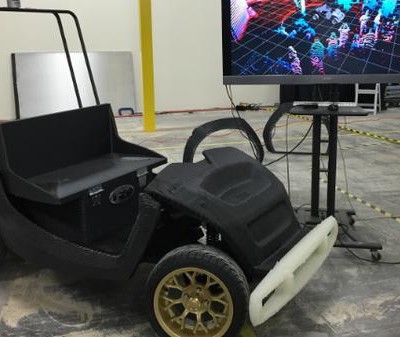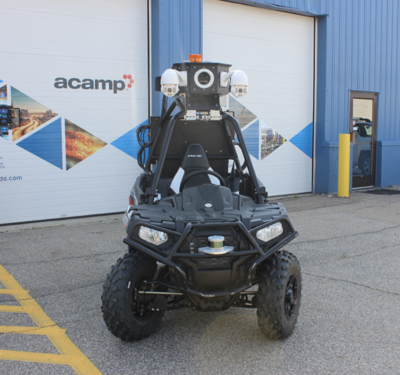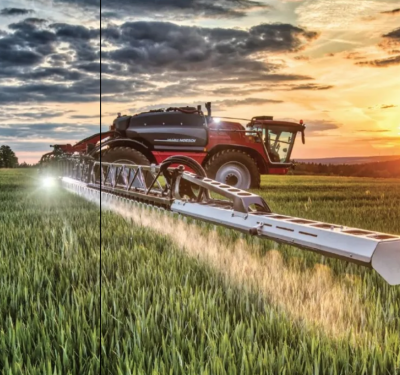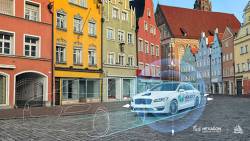Tiny Mobile Robots is a Denmark-based company using Topnet Live corrections to help deliver high-accuracy robotic sports field lining and road layout services.
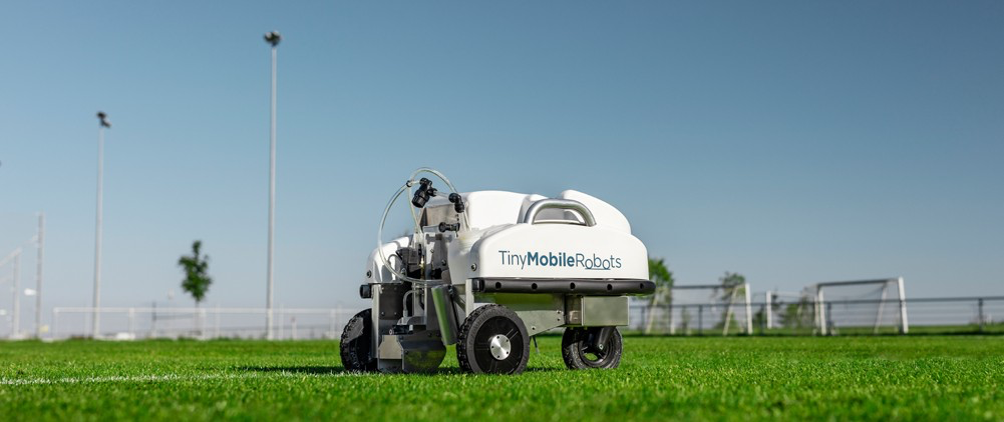
“Our customers prefer the Topnet Live correction signal because it gives them freedom”, said Tiny Mobile Robots CEO, Jens Peder Kristensen, “freedom to operate without having to care about ‘how do I get this half-inch accuracy’. With our robots, they always get the accuracy, automatically.” The company’s best-selling products are sports field marking or lining robots. “We work on all kinds of sports fields,” said Kristensen, “American football, soccer, lacrosse, softball, baseball, athletics fields and even more exotic sports like rugby, cricket and field hockey.”
Field lining customers tend not to come from the surveying or other technical fields. “They’re more used to working with their hands,” said Kristensen. “Typically, they’ve been working with paint spraying pumps mounted on hand pushers. They don’t want to work with more complex technologies, so having to set up a base station, for example, with extra devices and procedures for precise positioning would be way too complicated.”
Tiny Mobile Robots provides templates for any number of sports field lining patterns. The robots connect directly to the Topnet Live corrections signal, and the customer gets an extremely user-friendly tablet to operate the vehicles. “All they need to do is grab a sports field template with a finger, put it on a Google Maps background and press start,” said Kristensen.
“If you take an American football field as an example,” he said, “if you have to mark that field for the first time using one of those old hand pushers, you’re going to have to go out there with a measuring tape, on a field where you have 320 hash marks that need to be perfectly aligned. That job is going to take you 20 hours to complete. With our robots, you can do the same job in just two hours.”
The robots move at about 2.5 mph, with a positioning accuracy down to about 0.5 inches (1-2 cm), which is absolutely acceptable to customers. “The main consideration is that the lines are straight,” said Kristensen. “With Topnet Live corrections in combination with our firmware, we can get a 300-foot-long line that is straight down to the millimeter. The proof is in the human eye. You can see that the hash marks are lined up and the very long lines are perfectly straight, just by looking at them.” Here, watchers of American football will point out that referees in that sport cannot always see very well, but that’s another discussion.

Something completely different
Tiny Mobile Robots is also making its mark in another important sector, that of infrastructure and road construction. “We use our marking machines to put down lines on roads,” said Kristensen, “which are then used to guide larger machines that do the final markings.” The very big machines typically used for road marking put down a thick layer of thermal plastic paint. “It’s almost impossible to remove that stuff,” Kristensen said, “so if you have to correct a mistake, you get ghost lines, which can lead to accidents later on. People have tried automating those big machines, automating the final lining, but it hasn’t always been successful. It turns out its much more efficient to use an automated robot to do a first layout, and then have the big machine come in and do the final lining.”
Over 50% of today’s infrastructure investment is used to build roads, and they can’t be built safe without accurate line marking. This makes the work that Tiny Mobile Robots is doing lifesaving, thanks again to the precision and reliability delivered by TopNet Live GNSS corrections. “Of course, safety is also a concern during construction,” said Kristensen, “where we’ve seen cars smash through barriers and actually crash into our robots while the construction work is going on. So, the fewer people we have on site the better.”
The market seems to be satisfied. “We have many customers, and their numbers are growing fast,” said Kristensen, “and there’s a huge potential for this to continue, given the quantity of roads that are being built and the need for pre-marking and layout marking. Our customers are typically land surveyors. Their engineers make the drawings, feed us the digital data, essentially a map of where they want the lines, and then the robot takes this drawing and marks it, prints it onto the real world, right onto the asphalt. We can layout at 2.5 mph, which is ten times faster than you could do manually, no matter which method you are using.”
The result is improved productivity, time and cost savings and improved safety of life performance. “Topcon has been a great company to work with,” Kristensen said. “We get great service. Any time we have a question, they are there for us immediately and ready to help, and that means we can be sure that our clients are getting a stable and reliable service. It’s really a fantastic partnership.”


